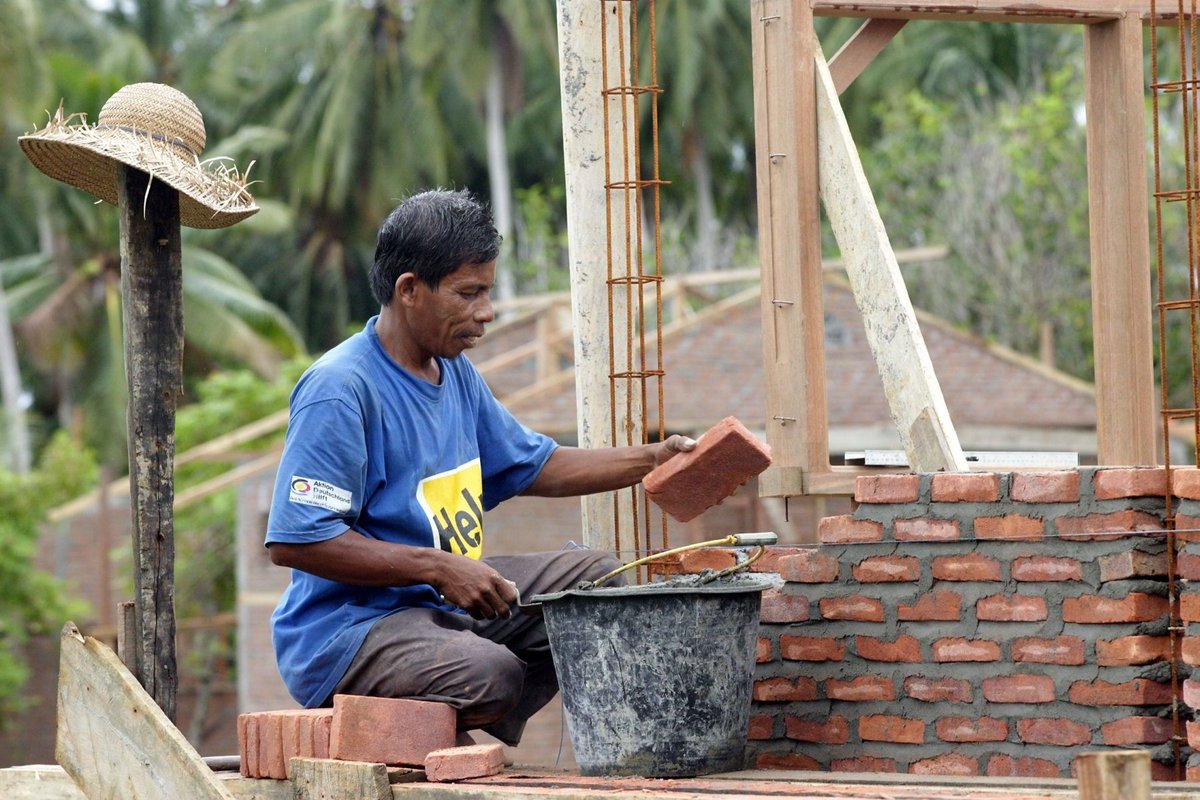Reconstruction

Donate for reconstruction
The earthquake in Nepal has shown us the devastating consequences that natural disasters can have in poor countries. Help is committed to effective reconstruction measures and protects people from impending disasters in the long term.
The poor are hit the hardest

The earthquake in Nepal in 2015 completely destroyed 600,000 houses. A further 300,000 were severely damaged. Typhoon Haiyan in the Philippines in 2013 left 4 million people homeless.
The main reasons for the immense damage caused by natural disasters in developing countries are poverty and lack of education. The people affected are forced to build their homes from the resources available. As a result, the buildings are usually neither earthquake-proof nor can they withstand high wind speeds. People often lack the knowledge of how to construct stable and safe buildings that can withstand future disasters.
How is Help contributing to reconstruction?
Reconstruction with brains

For Help, reconstruction means not only restoring the old, but also taking preventive measures in the construction process. So that the damage is reduced or even prevented in the event of another disaster.
For example, Help is introducing more stable construction techniques so that the buildings can withstand an earthquake. We build protective walls and dykes in flood areas to prevent flooding. New techniques are always passed on to the local people so that they can use them themselves in further construction projects - in the spirit of helping people to help themselves.
We always involve the local population directly - especially when it comes to building entire infrastructures, as the locals know the conditions in the region and their own needs best. Even after disasters and initial emergency aid measures, Help does not leave affected people alone, but accompanies and supports them until they are able to lead a self-determined and independent life again.



